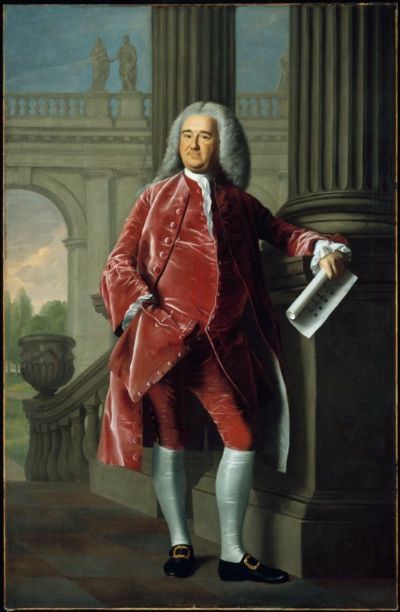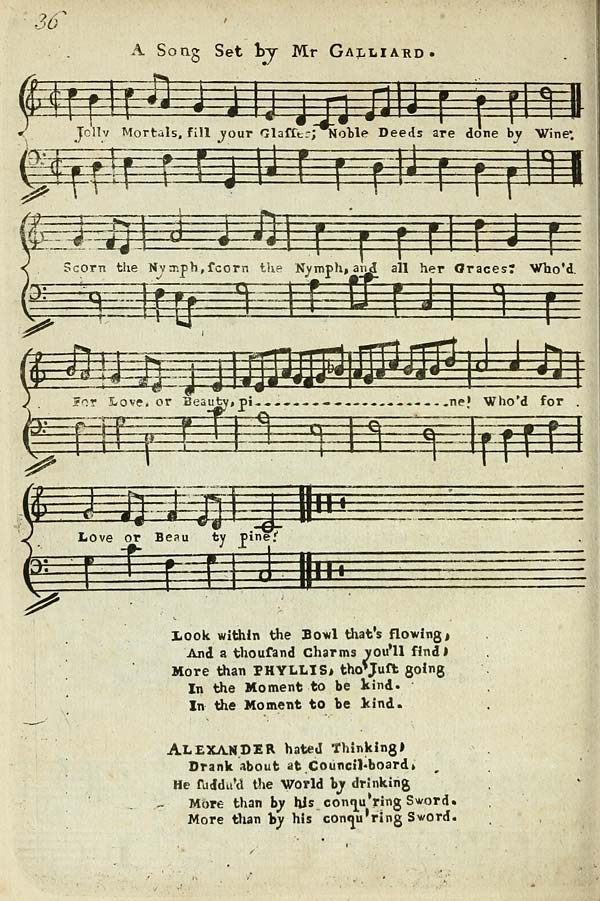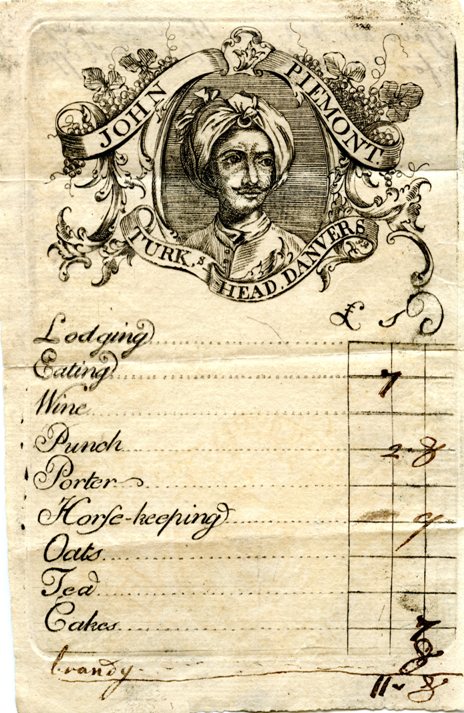The Barber and the Ship Captain
I couldn’t find any mention of that dispute in the New York press. I spotted no trace in American newspapers of a captain named “Crozer.”
The British newspaper article claimed that “the worthy sons of liberty in solemn Congress assembled…voted and unanimously” to praise the barber. There was no New York Provincial Congress yet, so that could only mean the Continental Congress, which did no such thing.
For a while I wondered if this anecdote was completely fictional, made up to make the Americans look petty and hateful but then assumed to be true by some British readers. Slowly, however, I was able to nail down some surrounding details.
The barber in the print did exist. On 9 Feb 1769 “Jacob Vredenburgh, Peruke-maker,” was registered as a freeman of the city of New York.
Later that year, on 23 October, the banns were published for “Jacob Vredenburg” to marry Jannetje Brouwer at the Reformed Dutch Church. There were no surviving children from that marriage.
Vredenburgh shows up in records related to his wife’s family: at the baptism of a niece in 1771, as a co-executor with John Brower in November 1798, and in his own will proved in September 1800, with his wife (now called Jane) and John Brower among the executors.
There’s also a 1788 will of “John Vredenburgh, hairdresser, of New York City,” that names one heir as that man’s brother “Jacob Vredenburgh, of Elizabethtown, New Jersey, hairdresser,” so he may have moved out of the state for a while.
Furthermore, the captain in the print did exist. Or rather, had existed.
On 30 June 1774, the Massachusetts Spy printed this item:
Last Saturday arrived at Marblehead, the Schooner Dove, Ebenezer Parker from Newfoundland, who spoke with the ship Empress of Russia, John Crosier master, from Ireland, out six weeks bound to Boston with the 38th regiment on board.The next day, that regiment arrived, along with the 5th and Adm. Samuel Graves’s flagship.
After the “Powder Alarm” on 2 September, Gen. Thomas Gage began moving all his troops in New York City up to Boston, too. The Empress of Russia might well have been part of that operation, putting Capt. John Crozier in New York in late September or early October, when he reportedly had his dispute with Vredenburgh. But then he would have headed back to Boston.
The Boston Evening-Post for 21 Nov 1774 listed among the people who had died in town:
Capt. Crozier, Commander of the Empress of Russia Transport Ship.The records of King’s Chapel include the burial on 19 November of:
John Crozier / Captain of the King of Prussia Transport / [age] 51(Empress of Russia—King of Prussia—all the same, right?)
Thus, less than two months after Jacob Vredenburgh allegedly kicked John Crozier out of his barber shop in New York, the captain died in Boston. By the time a satirical print was made to illustrate that story, he had been dead for nearly three months.
TOMORROW: A letter from a dead man?

















_-_Geographicus_-_SoutheastAsia-bonne-1770.jpg/320px-1770_Bonne_Map_of_India%2C_Southeast_Asia_%5E_The_East_Indies_(Thailand%2C_Borneo%2C_Singapore)_-_Geographicus_-_SoutheastAsia-bonne-1770.jpg)


